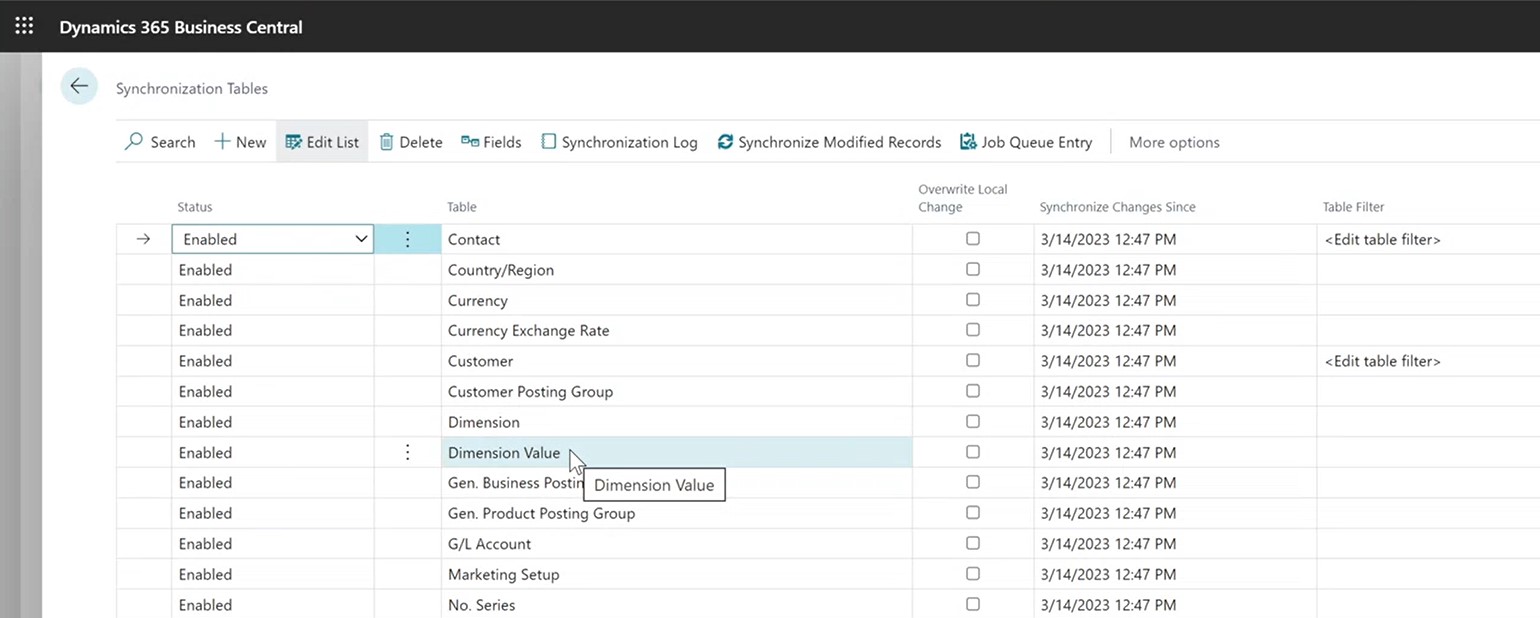The new release of Microsoft Dynamics 365 Business Central brings more advanced features and enhancements to boost efficiency. Here are a few of my favorites that you may find beneficial:
Set up and sync master data across companies
This feature allows you to synchronize master data more easily across multiple companies. It is specifically for companies that have consolidation essentially and are more of a global company with multi entities.
In the past, with a configuration package you would have to download things like the chart of accounts, dimensions, etc. to keep all the companies in sync. Now, you have got a way to automate it. On the Master Data Management Setup page, you can define your main operating company (Master/Source company). This is the system of record for updating master data. Enable Data Synchronization. Click on ‘Synchronization Tables’ to specify which tables you want to sync. By default, everything is enabled but you can disable the ones that are not needed.


I would recommend to at least enable the ones that you typically sync up like Chart of Accounts, Dimension, Dimension Values and G/L Account Category. The interesting thing is that you can sync up any table you want and define the fields too. It is a pretty robust feature. You can add filters so only certain records within that table sync up. After setting it up to sync, you can create a schedule for it to run.
Intercompany posting provides a one-stop-shop setup experience
This feature would apply for the same companies that might do the master data sync because they’ve got inter- companies. There is a new Intercompany Setup page. Most of the features on this page already exist in Business Central. Now, they have been moved into one page to make it a little bit more user friendly. You can set up all the different intercompany transactions here.
The consolidation set up which is done in the business unit page is more for financial statements. This is intercompany set up from a transaction – if you want to automate companies, the different legal entities billing each other, you can do it here.
Adjust exchange rates easily, replace the built-in batch job
With this release, Microsoft has enhanced the adjust exchange rate functionality. This again is relevant to companies that operate in multiple countries and do transactions in different currencies.
There is a process called Adjust Exchange Rates which revalues the documents to the current rate. So, if you have a payable or receivable that’s outstanding and it’s denominated, it got billed in a currency other than the local, then you can adjust the value of that on your books.
Stay tuned for Part Two.
– Jason has over 20 years of financial leadership experience in high growth technology companies. He is a Microsoft Certified Dynamics 365 Business Central Functional Consultant Associate. See Credential.